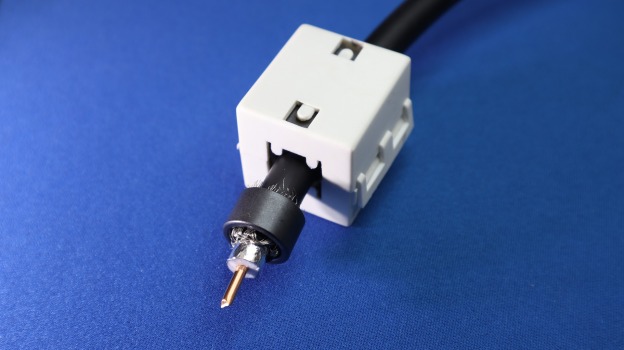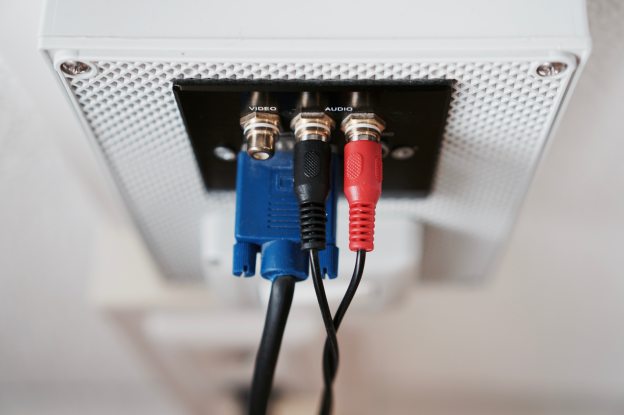If you are looking for high-quality RF cables, Time Microwave Systems (TMS) is one of the largest designers and manufacturers of coaxial cables. They specialize in high-end RF cables and the popular LMR® product line is something to consider. You can check the product line available with the authorized distributor Sole Engineering who deals in a wide range of products. They have earned a reputation in the market for delivering quality products in a reasonable price range.
Design
Coaxial cables can greatly vary in design, which can affect the performance and utility of the cable. They were designed to reduce the problem of electromagnetic interference faced by using a twisted pair of wires when they carry current. The term coaxial implies that all the layers of the cable share the same axis. In the centre is a single copper wire which is wrapped into an insulator (usually plastic). The inner conductor could be one solid rigid wire or a stranded layer offering more flexibility. The inner wire could be silver-plated or copper-plated.
The next outer layer is metallic (aluminum usually) and it functions to block out electromagnetic interference (EMI) from outside. The outermost is a rubber coating also referred to as a protective jacket. The dielectric insulator wrapped around the inner conductor greatly affects the properties of the wire. The insulator may be a foam plastic, solid plastic, or air with spacers supporting the inner wire.
At the end of the cable, there is a connector that serves to connect the cable with the appliance. The thick metal-plated structure helps prevent any loss of signal or leakage when the connection is established.
Shielding
Shielding reduces the cross-talk also known as electromagnetic interference and therefore can carry signals for longer distances. Coaxial cables can either have foil shielding or braided shielding in the layering for insulation. Foil shielding is usually aluminum sheets and protects against higher frequency EMI. Braided shielding provides the best protection against lower frequency EMI.
Signal Loss
Even the best shielding can not give a hundred percent resilience against EMI or leakage, and there is a signal loss to some degree as the signal travels over the distance. The amount of signal loss is an important factor when you are looking to buy a coaxial cable. Depending upon your need you need to be mindful of the signal loss over the distance unit.
Types
Coaxial cables are capable of transmitting data in the form of RF, microwave, or digital signals. While coaxial cables have the same basic structure but the design could vary for different applications. The variation in the design of the coaxial cable can greatly alter its functionality and performance. They were designed to reduce the problem of electromagnetic interference faced by using a twisted pair of wires when they carry current. The term coaxial implies that all the layers of the cable share the same axis. In the centre is a single copper wire which is wrapped into an insulator (usually plastic). The next outer layer is metallic (aluminum usually) and it functions to block out electromagnetic interference (EMI) from outside. The outermost is a rubber coating also referred to as a protective jacket.
Application
Coaxial cables have great implications in the prototyping industry and global production. You can assess the quality of coaxial cables on the basis of structure, efficiency, and capacity.
Coaxial Cables are extensively used in various applications including industrial and mechanical applications. They are the most common wires used in tv, cable, DVD player connections as well as CCTV and wireless internet connections. They also have applications in military communication systems and airborne systems. They are a preferred choice due to the higher quality of signal transmission and lower signal loss. They deliver signal quality as good as optic fiber but are more durable and cheaper in comparison.
You will have to choose the RF coaxial cable depending upon your needs for frequency application, bandwidth, and the distance you need to cover. Thicker cables will be able to handle higher frequencies better with minimum distortion or leakage. This implies the factor that you should consider are shielding and signal loss.
The wide range of coaxial cables with different connectors can help you design several systems more efficiently with better quality and less cost. Sole Engineering supplies you with the highest quality cables with the most reasonable rates in the market. We are popular for the high-quality diverse product range and low prices in Malaysia. Our company is appreciated for delivering high performance, quality goods at rates competitive to the market.




